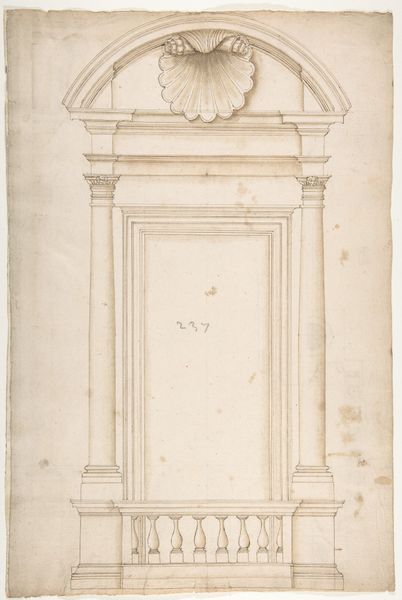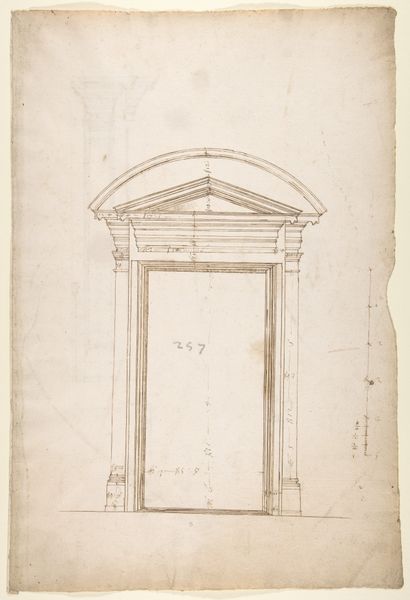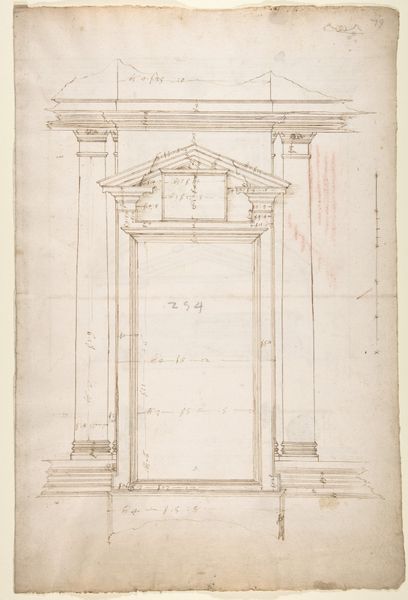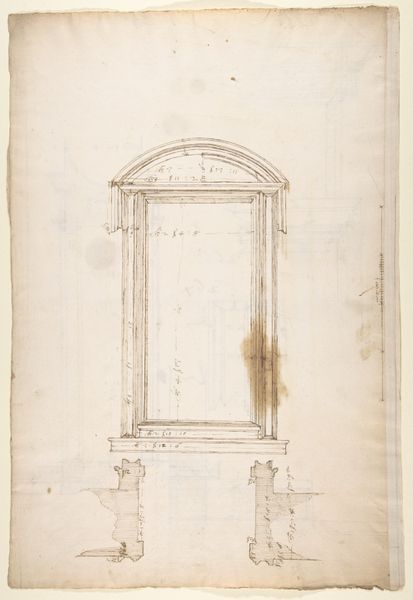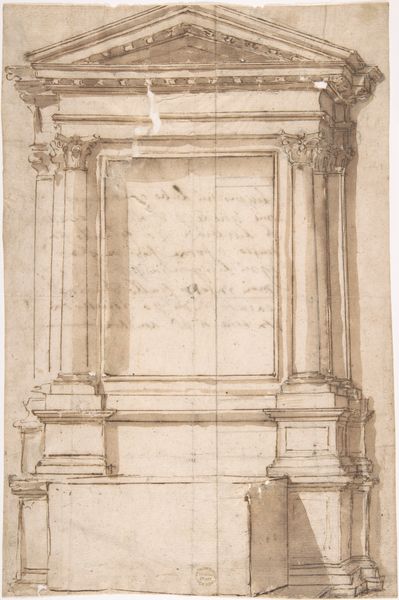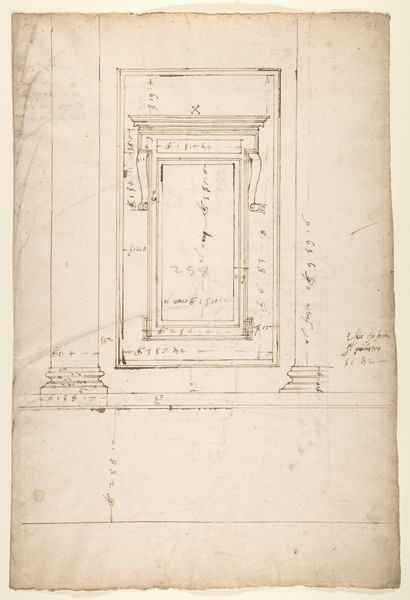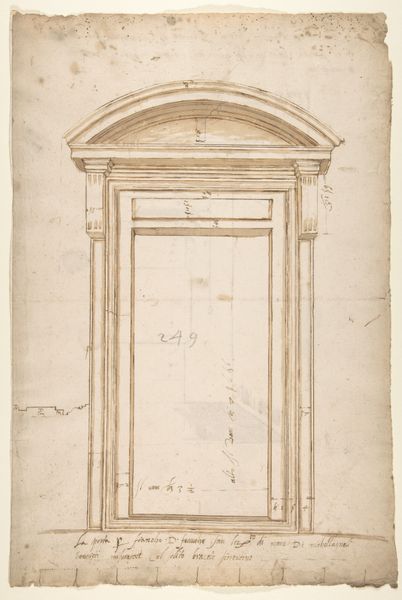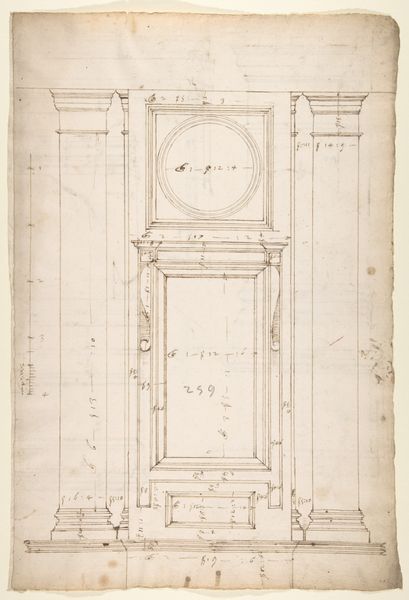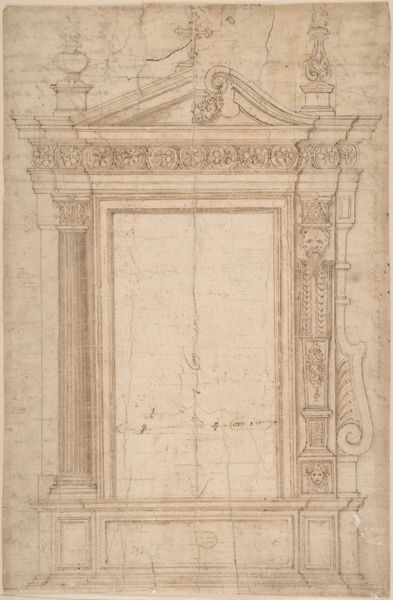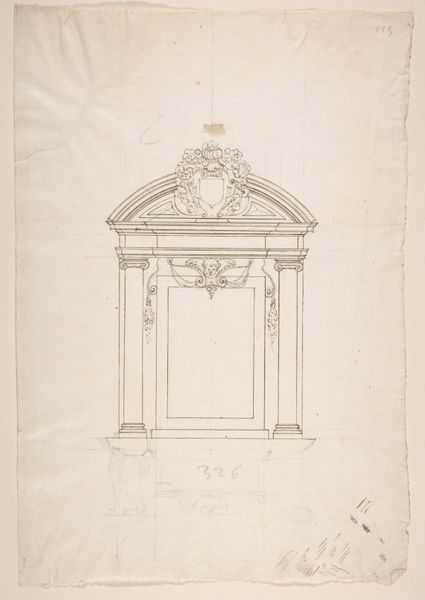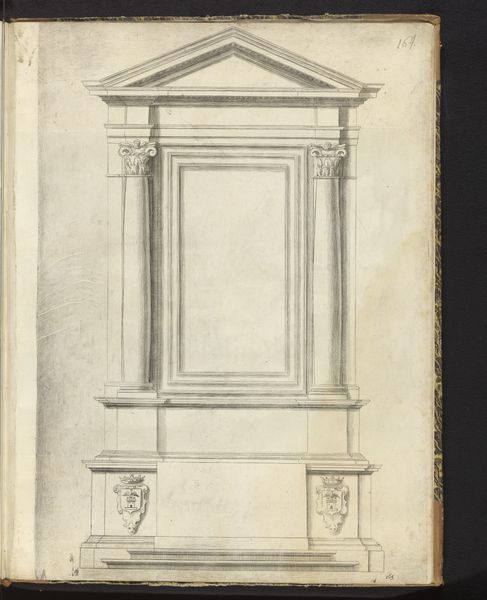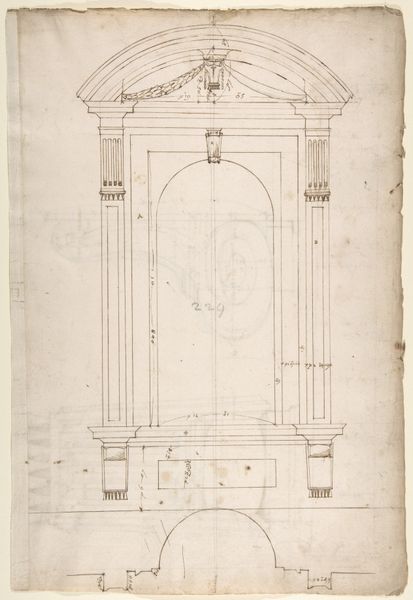
Sant'Apollonia, portal, elevation (recto) Sant'Apollonia, portal, plan (verso) 1500 - 1560
0:00
0:00
drawing, print, paper, ink, architecture
#
drawing
# print
#
paper
#
11_renaissance
#
ink
#
italian-renaissance
#
architecture
Dimensions: sheet: 17 3/16 x 11 9/16 in. (43.7 x 29.3 cm)
Copyright: Public Domain
Curator: Ah, here's a fascinating drawing from the Metropolitan Museum’s collection, created sometime between 1500 and 1560 by an anonymous artist. It's a portal design for Sant’Apollonia, rendered in ink on paper. We see both an elevation and a plan. Editor: It feels so... contained. Minimal, even. All these meticulous lines creating this very stoic facade. The ink wash gives it a ghostly feel, like peering into a half-remembered dream of perfect order. Curator: Precisely! Architectural drawings from this period weren't just technical exercises. They were declarations of civic and religious ideals, shaped by Renaissance humanism and the rediscovery of classical forms. Think about how the Church used architecture to project power, wealth, and divine authority. Editor: Right. It’s interesting how blank the center is. Is that intentional, a space for, like, divine inspiration or an emptiness ready to be filled? What *would* go there in reality? Curator: That void might suggest a niche for a sculpture or perhaps a dedication inscription. These portals served as liminal spaces—thresholds—between the secular world and the sacred interior. They weren't merely entrances, but rather carefully designed transitions that shaped the worshipper's experience. The anonymity, though, tells us it's a workshop design, perhaps one of many possibilities considered. Editor: You're making me see beyond just lines on paper! Thinking about it that way—as a gateway between worlds—changes my entire perception. The slightly off-kilter, handmade quality feels incredibly personal. It hints at a human creator behind all this measured precision. Almost fallible, in a charming way. Curator: Absolutely. The act of drawing itself becomes a testament to the ambition of the Renaissance and, well, to us, now as people investigating its social life, how art has impacted humanity. It reflects their aspirations to rebuild and redefine their world through the lens of classical learning and Christian faith. Editor: Thinking about someone drafting this five centuries ago and us observing today from New York city... The drawing now holds the space for those temporal shifts in an ineffable state. It contains time! Thank you, portal design of Sant'Apollonia.
Comments
No comments
Be the first to comment and join the conversation on the ultimate creative platform.
